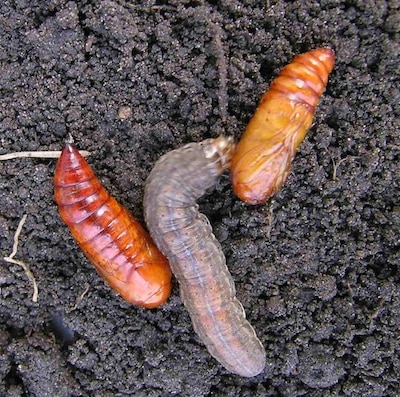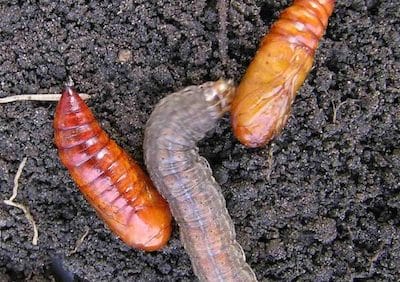Usually by the end of June, most of the cutworms that overwintered as eggs or partly grown larvae (such as redbacked, pale western, dingy and army cutworms) have pupated and are no longer a risk to crops. In early and warm springs, cutworms will often pupate earlier in June. In cooler spring, cutworm activity often carries into July before pupation.

Dingy and army cutworms will be around again as small larvae late in the summer, but at this point are not a threat to the crop.
Reseeding because of cutworms? If cutworms are still present and actively feeding, Lumiderm-treated seed provides good protection from cutworms. If not using Lumiderm-treated seed, an insecticide application after seeding may be required to protect the new crop.
Wait for a nice evening just before or as the newly seeded crop emerges and spray for cutworms if they are still present in large numbers and actively feeding. When feeding, their insides are bright green when squished. Brown gut contents indicates a cutworm that was not actively feeding and perhaps getting ready to pupate.
Before reseeding, here’s an article on how to make that decision.
Further reading:
Cutworms: The basics
Not sure it’s cutworms? Try the Canola Diagnostic Tool

